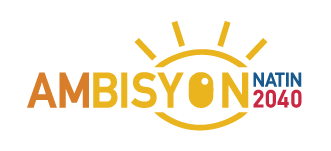Cai Ordinario (Business Mirror)
OKOHAMA, Japan—The Philippines continues to be the “belle of the ball” for many analysts, including the Asean+3 Macroeconomic Research Office (Amro), which projected the country’s economic growth to remain robust until next year.
Amro expects the Philippines to post a growth of 6.8 percent this year and 7 percent next year. These are within the growth expectations of local and international organizations, including multilateral development banks.
Inflation is also expected to average 3.1 percent this year and 3.2 percent next year.
This is within government expectations of 2 percent to 4 percent.
“[Growth will be] supported by infrastructure investment, investment on transportation equipment and household consumption,” Amro stated in its report launched here on Thursday.
National Economic and Development Authority (Neda) Secretary Ernesto M. Pernia is not daunted by the high expectations.
Pernia said the government can implement policies and programs that can help, but this alone will not be enough to sustain the country’s high growth.
“We always hope because we don’t have control of the economy, it’s just, we’re doing certain things that can have certain impact, but the real engine of the economy is something else,” Pernia said.
Amro, however, was cognizant of the challenges faced by the Philippines, which threatens to cut its economic growth this year and next year. It said growth could be jolted by “global economic shocks”, which could affect remittances and the overall domestic economy.
Any cut in remittances will affect the country, as Philippine economy remains consumption-driven.
Other threats include slower export performance and the ill effects of extreme weather conditions. This will affect the country’s ability to produce food, and thus, cause food prices to spike.
Poor Filipino families are very sensitive to this, because 70 percent of their household consumption is focused on food. Meanwhile the Asean+3 region is expected to grow at 5.2 percent in 2017 with inflation under control, despite the global uncertainty.
Regional emerging markets of Korea, Asean-5—Malaysia, Indonesia, the Philippines, Singapore and Thailand—and Vietnam remain resilient, even as volatility in global financial markets persists, while developing Asean economies of Cambodia, Lao PDR and Myanmar continue to grow and reap benefits from regional integration.
“It is encouraging to see that the Asean+3 region has been resilient going into 2017,” said Hoe Ee Khor, Amro chief economist. “Under the current global environment, the region should prioritize financial stability, while supporting growth with an appropriate policy mix, including targeted macroprudential policy measures and sustained structural reform.”
